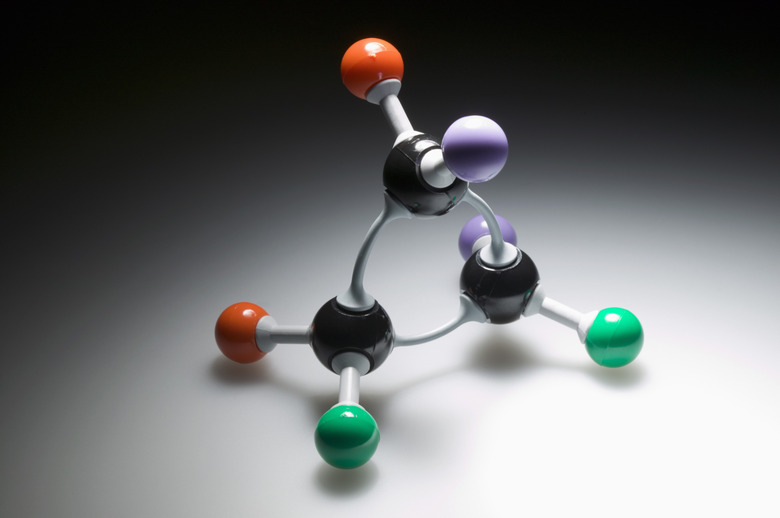The Size Of An Electron Compared To An Atom & A Chromosome
Humans have a natural ability to compare and contrast different objects. Taking sensory input, people are able to classify objects and create mental models of the world. But when you go outside the normal range of human perception, that classification isn't so easy. Microscopic objects are all "small." In fact, variations in scale among microscopic objects can be far more dramatic than the size differences you encounter in everyday life. The different sizes of chromosomes, atoms and electrons demonstrate this.
Human Perception
Human Perception
Humans can see objects down to about a length of 0.1 millimeter. That's smaller than a grain of salt. You probably have a pretty good idea of the relative sizes of, say, a grain of salt, a basketball and a bus. But when you get smaller or larger, size comparisons are much more difficult. For example, even if you've been to Rhode Island and the Grand Canyon, you probably don't know which is bigger — you can look it up or figure it out, but you don't have a natural sense of size once things get too big. Just for illustration, assume you have a natural feel for the size of objects from 0.1 millimeter in length to about 100 kilometers in length. That means you have a feel for objects that vary in scale by a factor of one billion.
Electrons
Electrons
Electrons are so small that they act by rules completely different from those that govern objects you can perceive directly. They sometimes act like balls, sometimes like clouds and sometimes like waves. You can't measure their size in the same way you can measure the size of a baseball. Even if you could shrink down to the size of an electron you couldn't measure it, because you'd have a hard time deciding where its edge was. Electrons are so small that no one has been able to determine their size, but they have calculated the largest their radius could be, and that's one billionth billionth of a meter.
Atoms
Atoms
An atom is composed of a relatively heavy nucleus surrounded by a cloud of electrons. Once again, if you shrank to the size of an atom you would have a hard time deciding how to define its edge, but you could make a guess. When atoms join together to make molecules they approach within a certain distance. You can think of that as the distance where the two atoms "bump against" one another. Using that definition, atoms have a radius of roughly one ten billionth of a meter. That is, they're about 100 million times bigger than electrons.
Chromosomes
Chromosomes
Chromosomes come in different shapes and sizes. If you think of a chromosome as a long string, then sometimes the string coalesces into a ball of yarn, and sometimes it wraps itself up like a coiled hose. If you add up the sizes of all the atoms in the smallest human chromosome you have 1,600,000 atoms. If they were all strung out in a line, the line would be about two-tenths of a millimeter long. That's 20 trillion times larger than an electron. Another way of thinking of that: if an electron were the size of a grain of salt, a chromosome would be two-thirds of the distance from the Earth to the sun. The difference between the size of an electron and the size of a chromosome is much larger than the difference between the smallest and largest objects you can get a feel for.
Cite This Article
MLA
Gaughan, Richard. "The Size Of An Electron Compared To An Atom & A Chromosome" sciencing.com, https://www.sciencing.com/size-electron-compared-atom-chromosome-22550/. 24 April 2017.
APA
Gaughan, Richard. (2017, April 24). The Size Of An Electron Compared To An Atom & A Chromosome. sciencing.com. Retrieved from https://www.sciencing.com/size-electron-compared-atom-chromosome-22550/
Chicago
Gaughan, Richard. The Size Of An Electron Compared To An Atom & A Chromosome last modified March 24, 2022. https://www.sciencing.com/size-electron-compared-atom-chromosome-22550/
